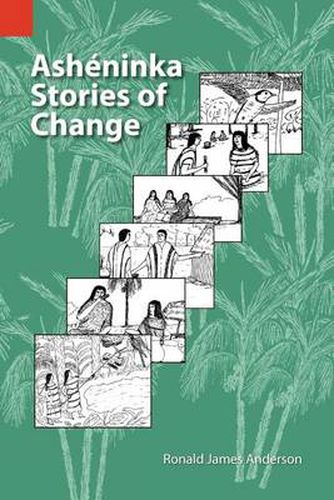Readings Newsletter
Become a Readings Member to make your shopping experience even easier.
Sign in or sign up for free!
You’re not far away from qualifying for FREE standard shipping within Australia
You’ve qualified for FREE standard shipping within Australia
The cart is loading…






This title is printed to order. This book may have been self-published. If so, we cannot guarantee the quality of the content. In the main most books will have gone through the editing process however some may not. We therefore suggest that you be aware of this before ordering this book. If in doubt check either the author or publisher’s details as we are unable to accept any returns unless they are faulty. Please contact us if you have any questions.
Modern economic and technological changes are accelerating the rate of social change in indigenous cultures around the world. The Ash ninka of the Amazon jungle region of east-central Peru confront change from two perspectives: the individual and the sociohistorical. All Ash ninka recall through their stories the four centuries of change since their earliest contacts with Spanish speakers. For the Ash ninka, all learning is situated in a complex blend of factors: history, beliefs, motives, practices, and persons. Children learn some skills in a guided manner, similar to apprenticeship, in which an adult consciously aids the child. They learn other skills in a nonguided manner; the child organizes the learning activities, which take the form of dramatic play, solitary experimentation, and collaborative learning with peers. As with learning traditional Ash ninka culture, the learning of a new culture is situated in its own complex blend of factors. Increasing contact with Spanish-speakers and increasing dependence on the market economy prompt the Ash ninka to give more value to learning Spanish, to organizing into villages, and to giving their children a school education. Anderson’s methodology in studying social change and its effects on education are applicable in many other parts of the world.
$9.00 standard shipping within Australia
FREE standard shipping within Australia for orders over $100.00
Express & International shipping calculated at checkout
This title is printed to order. This book may have been self-published. If so, we cannot guarantee the quality of the content. In the main most books will have gone through the editing process however some may not. We therefore suggest that you be aware of this before ordering this book. If in doubt check either the author or publisher’s details as we are unable to accept any returns unless they are faulty. Please contact us if you have any questions.
Modern economic and technological changes are accelerating the rate of social change in indigenous cultures around the world. The Ash ninka of the Amazon jungle region of east-central Peru confront change from two perspectives: the individual and the sociohistorical. All Ash ninka recall through their stories the four centuries of change since their earliest contacts with Spanish speakers. For the Ash ninka, all learning is situated in a complex blend of factors: history, beliefs, motives, practices, and persons. Children learn some skills in a guided manner, similar to apprenticeship, in which an adult consciously aids the child. They learn other skills in a nonguided manner; the child organizes the learning activities, which take the form of dramatic play, solitary experimentation, and collaborative learning with peers. As with learning traditional Ash ninka culture, the learning of a new culture is situated in its own complex blend of factors. Increasing contact with Spanish-speakers and increasing dependence on the market economy prompt the Ash ninka to give more value to learning Spanish, to organizing into villages, and to giving their children a school education. Anderson’s methodology in studying social change and its effects on education are applicable in many other parts of the world.